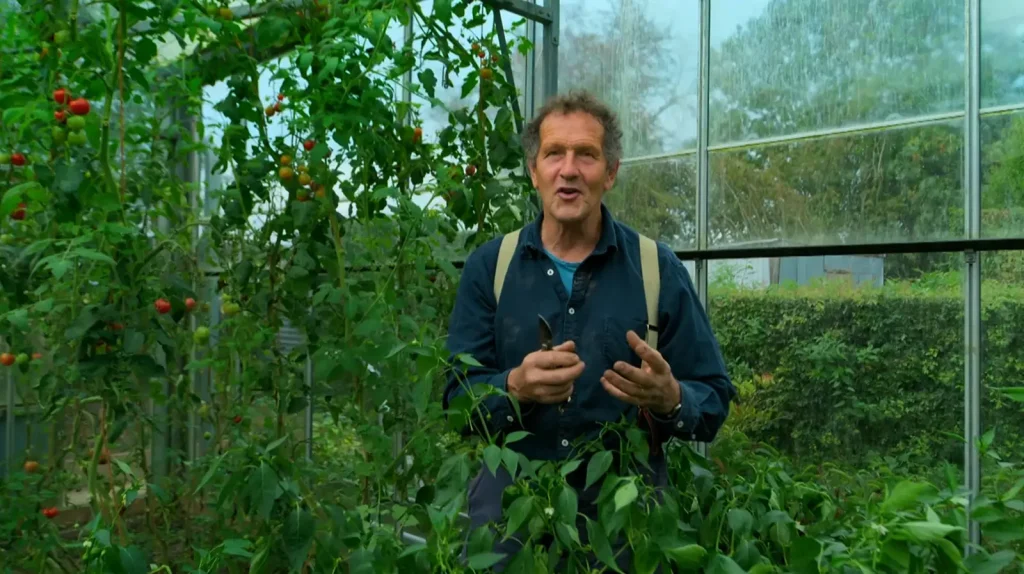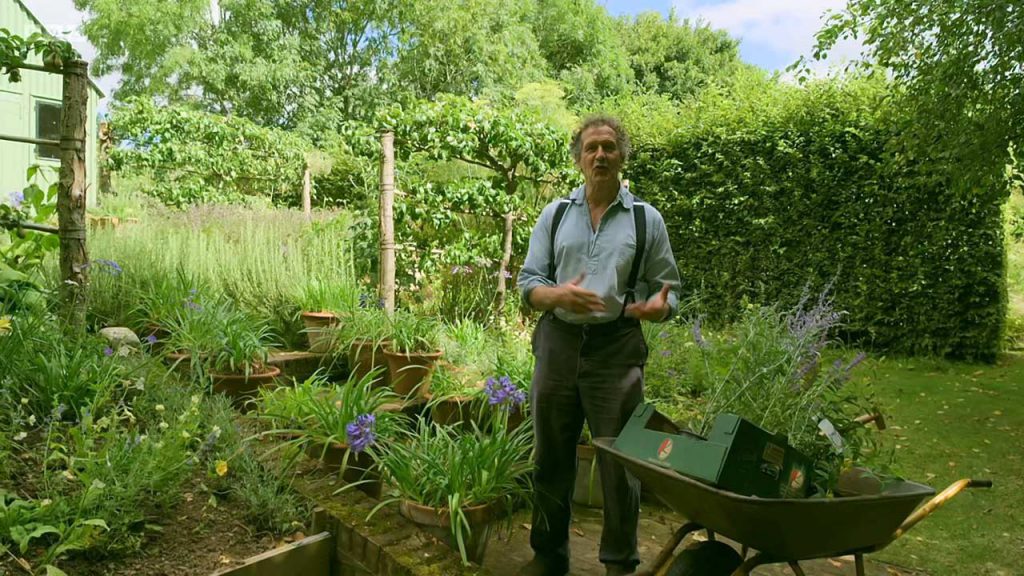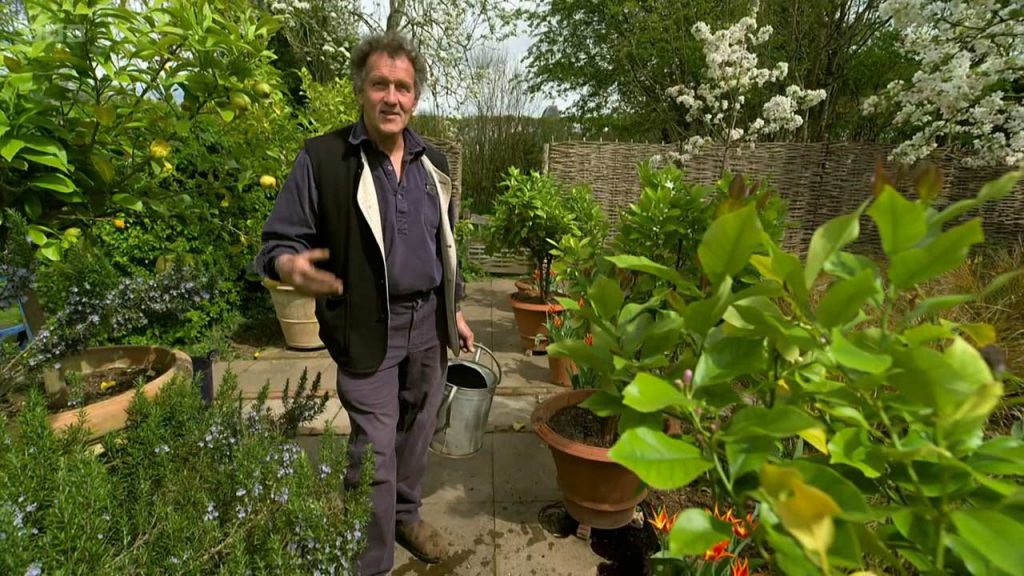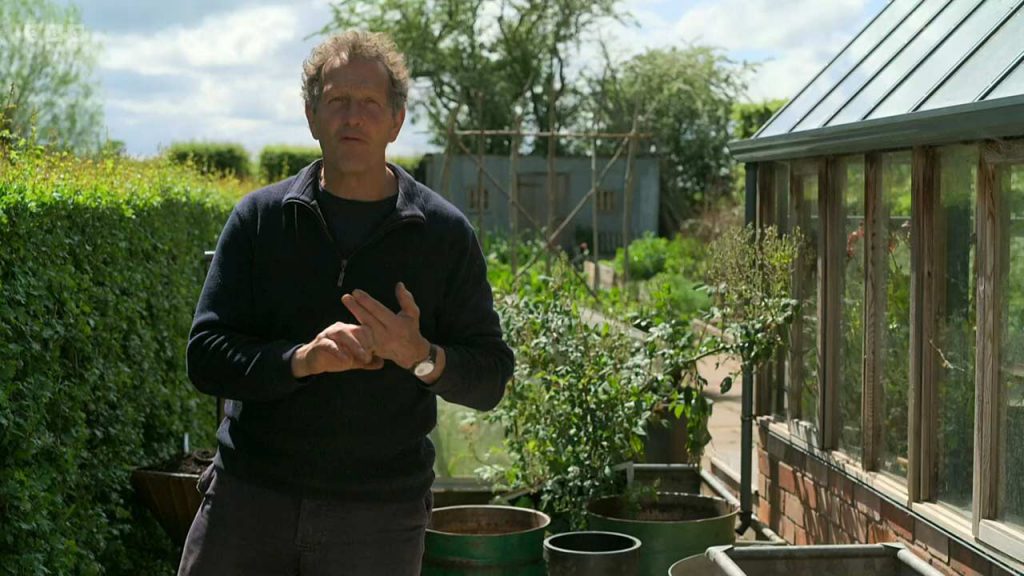Gardeners’ World 2023/24 Winter Specials episode 1 – Monty Don offers his expert guidance on the best methods to pot up amaryllis, a true star of the festive season, providing detailed steps to ensure their thriving growth.
Meanwhile, Carol Klein immerses herself in a vivid display of color and aroma in Kent, passionately advocating for witch hazel, a winter shrub renowned for its stunning beauty and spectacular blooms.
Down in South Yorkshire, Arit Anderson meets with Professor Nigel Dunnett, the visionary behind numerous public green space transformations. She explores how he applies his extensive knowledge to cultivate his personal garden, revealing insights into his unique gardening techniques.
Toby Buckland collaborates with Sue Kent at her allotment in Swansea. Together, they offer a wealth of practical advice on preparing for the upcoming growing season, discussing strategies to optimize plant health and allotment productivity.
In Cornwall, there’s a fascinating story of a couple who have created their own ‘secret garden’. This unique allotment, perched precariously on a cliffside, offers a breathtaking view and a hidden oasis for gardening.
Lastly, we visit a dedicated gardener in Herefordshire, who has mastered the art of preserving the essence of summer during winter’s darkest days. This gardener skillfully presses flowers, capturing their beauty and extending the joy of summer blooms throughout the year.
Gardeners’ World 2023/24 Winter Specials episode 1
The Art of Potting Amaryllis: A Festive Season Highlight
Potting Amaryllis in Winter
We delve into the intricacies of potting amaryllis, a festive season’s gem. This section offers step-by-step guidance on selecting bulbs, the right soil mix, and post-planting care to ensure your amaryllis blooms at its best.
Essential Care Tips for Thriving Amaryllis
Learn about the crucial aftercare for amaryllis, covering watering techniques, sunlight requirements, and tips to encourage re-blooming, making this festive star a recurring joy in your winter garden.
Introduction to Hippeastrum: The Stunning Indoor Bloomer
Hippeastrum, widely recognized as Amaryllis, is a captivating flowering plant, cherished for its vibrant blooms and ease of care. Popular as holiday gifts, particularly around Christmas, these plants can provide years of beauty with the right care. Understanding their botanical characteristics and growth requirements is key to successful cultivation.
Botanical Profile and Growth Conditions
- Common Name: Amaryllis
- Botanical Name: Hippeastrum species and cultivars
- Plant Group: Bulb
- Flowering Period: Winter to Spring
- Planting Time: October to January
- Size: 25-90 cm in height and 30 cm spread
- Preferred Aspect: Bright, filtered light
- Hardiness: Tender
- Growth Difficulty: Moderately Easy
Cultivation Techniques for Thriving Hippeastrum
Optimal Planting Method
Hippeastrum thrives indoors as a tender bulb. For best results, plant between October and January, following these steps:
- Potting: Use John Innes No.2 or multipurpose compost. Ensure the pot is slightly larger than the bulb, leaving two-thirds of the bulb above the surface.
- Location: Place in a well-lit area at around 21°C (70°F).
- Watering: Initially, water sparingly until leaves develop. Then, water regularly, avoiding both dry compost and excess water in the saucer.
- Light Management: Rotate the pot to prevent the flower stalk from leaning towards the light. Large-flowered cultivars may require staking.
- Flowering Care: Once in bloom, move the plant to a cooler area (15–18°C or 60-65°F) to prolong the flowering period.
Post-Flowering Care
Method 1
- Trimming: After blooming, cut spent flower spikes and maintain leaf growth with careful watering and weekly balanced liquid fertiliser.
- Summer Care: Place the potted bulbs outside or in a greenhouse, shaded from intense sun, and water regularly.
- Pre-Winter Preparation: In late September, move to a well-lit, cooler area around 13°C (55°F) for 8-10 weeks, reducing feeding and watering for semi-dormancy.
- Replanting: After this period, trim old leaves and replace the top layer of compost before restarting the growth cycle.
Method 2
- Drying: In late September, withhold water to let the plant dry out and cut back any spent spikes or yellowed leaves.
- Dormancy: Store the potted plants in a cool, dark place for 1-2 months.
- Regrowth: Bring indoors into the light, resume watering and feeding to initiate growth.
Repotting
Hippeastrums require repotting every 2-3 years, ideally between January and March after flowering.
Propagation Techniques
Seed Sowing
Hippeastrums can be grown from seeds, though they take up to six years to mature and may differ from parent plants. For successful seed propagation:
- Sowing: Plant fresh seeds in spring using free-draining seed compost.
- Temperature: Maintain at 21°C (70°F).
- Feeding: Begin feeding 5-6 weeks after germination, continuing until September.
- Potting: Grow in small individual pots, repotting as necessary.
Bulb Offsets
Propagation via offsets results in identical plants to the parent and takes 3-4 years to flower. Separate offsets during repotting and cultivate similarly to seedlings.
Embracing the Vibrancy of Witch Hazel – Gardeners’ World 2023/24 Winter Specials episode 1
Cultivating Witch Hazel in Winter Gardens
Witch hazel, with its unique flowers and therapeutic properties, is a winter garden’s pride. We explore varieties suitable for different climates and the best practices for planting and nurturing this spectacular shrub.
Witch Hazel: Beyond the Garden
Discover the multifaceted uses of witch hazel, from its role in natural skincare to its place in herbal remedies, and how you can integrate these benefits into your daily life.
Selecting the Ideal Witch Hazel for Your Garden
Understanding Varieties and Cultivars
Witch hazel, a winter-flowering shrub, is prized for its vibrant blooms and intoxicating fragrance. Choosing the right species and cultivar is crucial for garden success. Consider the color, fragrance, and growth pattern suitable for your garden’s space and aesthetic. Opt for cultivars with the RHS Award of Garden Merit for assured quality and performance.
Purchase Considerations
When buying witch hazel, prioritize plants with a balanced branch distribution, forming a vase-like shape. Avoid plants exhibiting stress or disease. Utilize the RHS Find a Plant tool for reliable stockists.
Planting Witch Hazel
Location and Soil Preparation
Witch hazels flourish in sunny to partially shaded areas. They prefer free-draining soil that retains moisture in summer. Enhance soil quality with organic matter like well-rotted manure or compost. Ideal soil pH ranges from acidic to neutral (4.5 to 6.5). For heavy clay soils, improve drainage by creating a mound for planting.
Planting Best Practices
The optimal planting time is between October and April, avoiding frozen or waterlogged conditions. Ensure the graft union remains above soil to prevent suckering issues. Regular watering is crucial for newly planted witch hazels, especially in spring and summer.
Ongoing Care and Maintenance
Watering and Feeding
Young plants require consistent watering until established, typically for two to three years. Mature plants need watering during dry spells. A balanced fertilizer applied in late winter or early spring encourages growth in young plants.
Pruning and Training
Regular pruning is not necessary for witch hazel. Remove only dead, damaged, or weak shoots to maintain health. If size control is required, prune after flowering, ensuring minimal impact on the plant’s natural shape. Fan-training is an alternative method for structured growth, especially against walls or fences.
Propagation Techniques
Grafting and Seed Propagation
Commercial witch hazels are often grafted onto Hamamelis virginiana rootstock. Enthusiasts can attempt grafting, with flowering possible in 4-5 years. Seed propagation is suitable for species plants, but cultivars may not reproduce true to type.
Cuttings and Layering
Propagating through cuttings is challenging but feasible with the right conditions. Layering is a simpler, albeit slower, method for increasing stock.
Addressing Common Problems
Witch hazels are relatively hardy but can face issues like root diseases, pests in container plants, and foliage ailments like powdery mildew. Regular monitoring and appropriate interventions can mitigate these problems.
Transforming Public Green Spaces
Innovative Approaches to Public Greenery
We share insights into transforming public green spaces, discussing sustainable practices, community involvement, and how these spaces contribute to urban well-being.
Personal Garden Cultivation: A Microcosm of Public Spaces
Learn from the expertise of those who shape public gardens and how these principles can be applied to personal gardens, creating a harmonious blend of aesthetics, sustainability, and community engagement.
Preparing for the Growing Season
Allotment Preparation: A Springboard for Success
As we approach the growing season, discover comprehensive strategies for preparing your allotment. This includes soil preparation, crop rotation, and pest control methods for a bountiful harvest.
Creative Allotment Ideas: From Practical to Picturesque
Explore innovative ideas to transform your allotment into a space of both utility and beauty, including vertical gardening, companion planting, and creating a biodiversity hotspot.
Preserving the Spirit of Summer
Summer Flower Preservation through Pressing
Unearth the timeless art of flower pressing, a method to preserve the essence of summer. We guide you through selecting flowers, pressing techniques, and creative ways to use pressed flowers in decor and crafts.
Creating a Cliffside Secret Garden
Journey with us to a cliffside garden, a hidden gem offering unique challenges and immense rewards. Learn how to leverage such unique landscapes for gardening, focusing on soil stability, plant selection, and landscape aesthetics.
Frequently Asked Questions – Gardeners’ World 2023/24 Winter Specials episode 1
Q: What are the best plants for winter gardening?
A: Ideal winter plants include amaryllis, witch hazel, hellebores, and evergreens. They provide color, texture, and interest in colder months.
Q: How can I protect my garden in winter?
A: Mulching, covering sensitive plants, and ensuring proper drainage are key to protecting your garden from winter elements.
Q: When is the best time to start preparing for the growing season?
A: Late winter or early spring is ideal for starting preparations like soil enrichment, planning plant layouts, and starting seedlings indoors.
Q: Can I practice flower pressing with any flower?
A: While most flowers can be pressed, the best results come from flowers with naturally flat faces like pansies, violas, and ferns.
In this comprehensive guide, we have provided a wealth of knowledge on winter gardening tips, from potting amaryllis to cultivating witch hazel, and beyond. Each section is enriched with detailed, practical advice to help you transform your garden into a thriving, beautiful space, regardless of the season.




